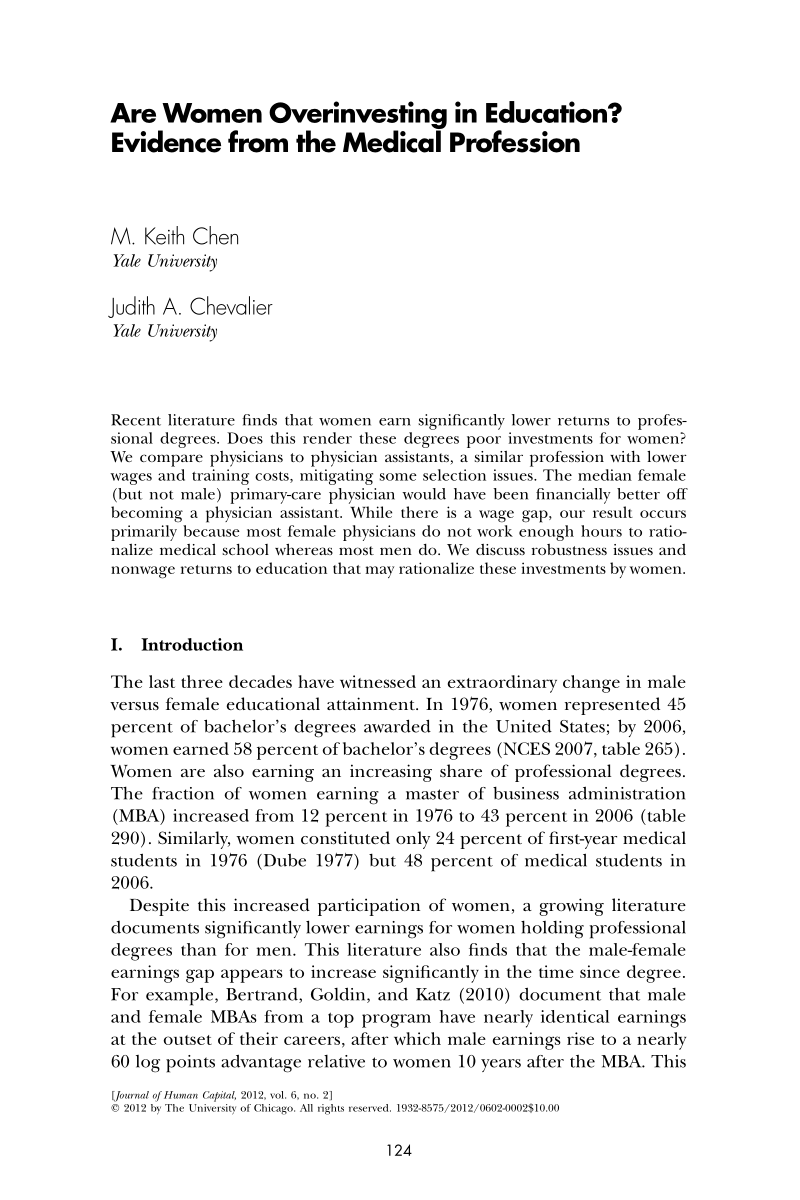Journal of Human Capital study finds that female physicians work fewer hours than male physicians.
- Type
- Academic / Technical Report
- Source
- M. Keith Chen Non-LDS
- Hearsay
- Secondary
- Reference
M. Keith Chen and Judith A. Chevalier, "Are Women Overinvesting in Education? Evidence from the Medical Profession," Journal of Human Capital 6, no. 2 (Summer 2012): 124, 126-127
- Scribe/Publisher
- Journal of Human Capital
- People
- M. Keith Chen, Judith A. Chevalier
- Audience
- Reading Public
- Transcription
[ABSTRACT:] Recent literature finds that women earn significantly lower returns to professional degrees. Does this render these degrees poor investments for women? We compare physicians to physician assistants, a similar profession with lower wages and training costs, mitigating some selection issues. The median female (but not male) primary-care physician would have been financially better off becoming a physician assistant. While there is a wage gap, our result occurs primarily because most female physicians do not work enough hours to rationalize medical school whereas most men do. We discuss robustness issues and nonwage returns to education that may rationalize these investments by women.
. . . .
a larger part of the difference in male versus female returns to entering medical school stems from differences in hours worked. In our data, the median male physician with 10 years of experience works 11 hours per week more than the median female physician in our sample with 10 years of experience. Simply put, the majority of women physicians do not appear to work enough hours earning the physician wage premium to amortize that profession’s higher up-front investments.
- Citations in Mormonr Qnas
The B. H. Roberts Foundation is not owned by, operated by, or affiliated with the Church of Jesus Christ of Latter-day Saints.

